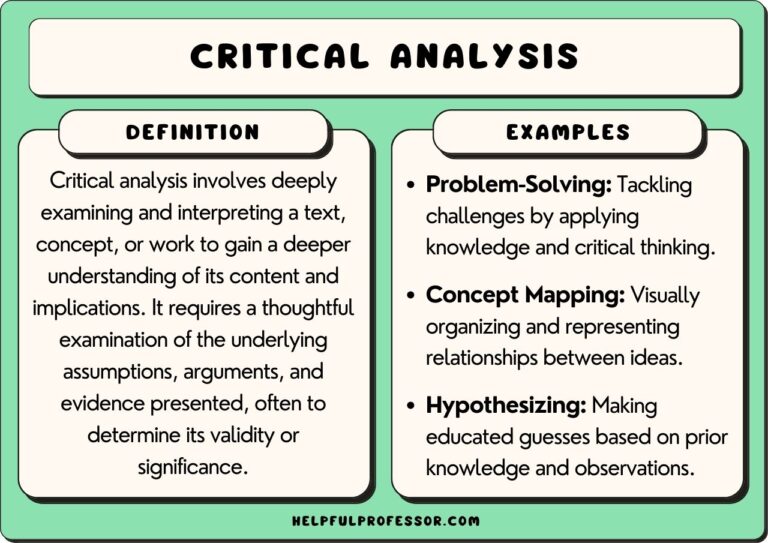Week In Review: A Critical Analysis Of Setbacks

Table of Contents
Identifying Key Setbacks
Defining a "setback" is crucial. In this context, a setback is any event or circumstance that hinders progress toward a personal or professional goal. These can range from minor inconveniences to significant obstacles. Common examples include missed deadlines, project failures, unexpected technical difficulties, relationship conflicts, and even personal health issues.
This past week presented several setbacks:
- Missed Deadline: I failed to submit a crucial report by Friday's deadline, resulting in a delay of the project launch. This cost approximately 2 hours of extra work and caused minor stress. This is categorized as an internal setback (lack of time management).
- Client Communication Breakdown: A misunderstanding with a client led to a revised project scope, adding an extra day of work. This impacted workflow, adding an extra day to the project timeline and causing a small amount of financial impact due to delayed deliverables. This is partially internal (lack of clear communication) and partially external (client's misinterpretation).
- Technical Glitch: A software malfunction prevented me from accessing important files for two hours, disrupting my workflow. This resulted in approximately two hours of lost productivity and elevated frustration levels. This is categorized as an external setback (unforeseen technical issue).
Root Cause Analysis of Setbacks
Understanding why setbacks occur is just as important as acknowledging that they occurred. Simply acknowledging a problem doesn't solve it. This is where root cause analysis comes in. Techniques like the "5 Whys" and the fishbone diagram can help uncover the underlying causes.
Let's apply the 5 Whys to each setback:
-
Missed Deadline:
- Why did I miss the deadline? Because I underestimated the time required.
- Why did I underestimate the time? Because I didn't break down the task into smaller, manageable parts.
- Why didn't I break down the task? Because I felt pressured to complete it quickly.
- Why did I feel pressured? Because I had other competing priorities.
- Why did I have competing priorities? Because my task prioritization wasn't effective.
-
Client Communication Breakdown:
- Why was there a communication breakdown? Because the initial project brief lacked clarity.
- Why was the brief unclear? Because sufficient time wasn't allocated for thorough documentation.
- Why wasn't sufficient time allocated? Due to tight deadlines and resource constraints.
-
Technical Glitch:
- Why did the software malfunction? Because of an unforeseen software bug.
- Why wasn't the bug addressed earlier? Due to infrequent software updates. (This points to a systemic issue requiring a process improvement)
Strategies for Mitigating Future Setbacks
Learning from these setbacks requires developing actionable strategies to prevent their recurrence. This involves:
- Improved Time Management: Implementing time blocking, task prioritization techniques (like Eisenhower Matrix), and breaking down large tasks into smaller, more manageable chunks to avoid underestimating workload.
- Enhanced Communication: Implementing clearer communication protocols with clients, including detailed project briefs, regular check-ins, and proactive conflict resolution strategies.
- Proactive System Maintenance: Regularly updating software and backing up important files to minimize the impact of technical glitches. Implementing a robust disaster recovery plan to quickly restore access to critical data.
- Seeking Mentorship: Reaching out to experienced professionals for guidance and feedback can assist in identifying blind spots and improve overall strategy.
Transforming Setbacks into Opportunities for Growth
The most significant takeaway from this week's setbacks isn't the inconvenience they caused, but the growth they facilitated. Setbacks aren't failures; they're learning opportunities.
- Improved Time Management Skills: The missed deadline highlighted the need for better time management, forcing me to refine my scheduling techniques.
- Enhanced Communication Strategies: The client communication breakdown underscored the importance of clear, concise project documentation.
- Strengthened Problem-Solving Skills: Overcoming the technical glitch improved my problem-solving skills and highlighted the need for proactive system maintenance.
- Increased Self-Awareness: Reflecting on these setbacks improved my self-awareness concerning potential weaknesses in my workflow and communication strategies.
Conclusion: Learning from This Week's Setbacks
This week's review highlighted key setbacks: a missed deadline due to poor time management, a client communication breakdown due to unclear project documentation, and a technical glitch caused by infrequent software updates. By implementing improved time management techniques, enhancing communication protocols, and proactively maintaining systems, we can mitigate future setbacks. Remember, setback analysis isn't about dwelling on failures but about extracting valuable lessons for future growth. Start your own critical analysis of setbacks today and transform your challenges into triumphs! Regularly reviewing your setbacks—conducting a thorough setback analysis—will lead to significant personal and professional development. Don't let setbacks define you; let them refine you!

Featured Posts
-
 Top Crypto Casinos Comparing Jackbits Instant Withdrawal System
May 17, 2025
Top Crypto Casinos Comparing Jackbits Instant Withdrawal System
May 17, 2025 -
 Prestamos Estudiantiles Y La Presidencia De Trump Analisis De Las Consecuencias
May 17, 2025
Prestamos Estudiantiles Y La Presidencia De Trump Analisis De Las Consecuencias
May 17, 2025 -
 Canada China Trade Relations Ambassador Hints At Formal Deal
May 17, 2025
Canada China Trade Relations Ambassador Hints At Formal Deal
May 17, 2025 -
 Reese To Van Lith Crucial Advice For A Successful Wnba Rookie Season
May 17, 2025
Reese To Van Lith Crucial Advice For A Successful Wnba Rookie Season
May 17, 2025 -
 Fortnite Cowboy Bebop Collaboration Free Rewards Available For A Short Time
May 17, 2025
Fortnite Cowboy Bebop Collaboration Free Rewards Available For A Short Time
May 17, 2025
